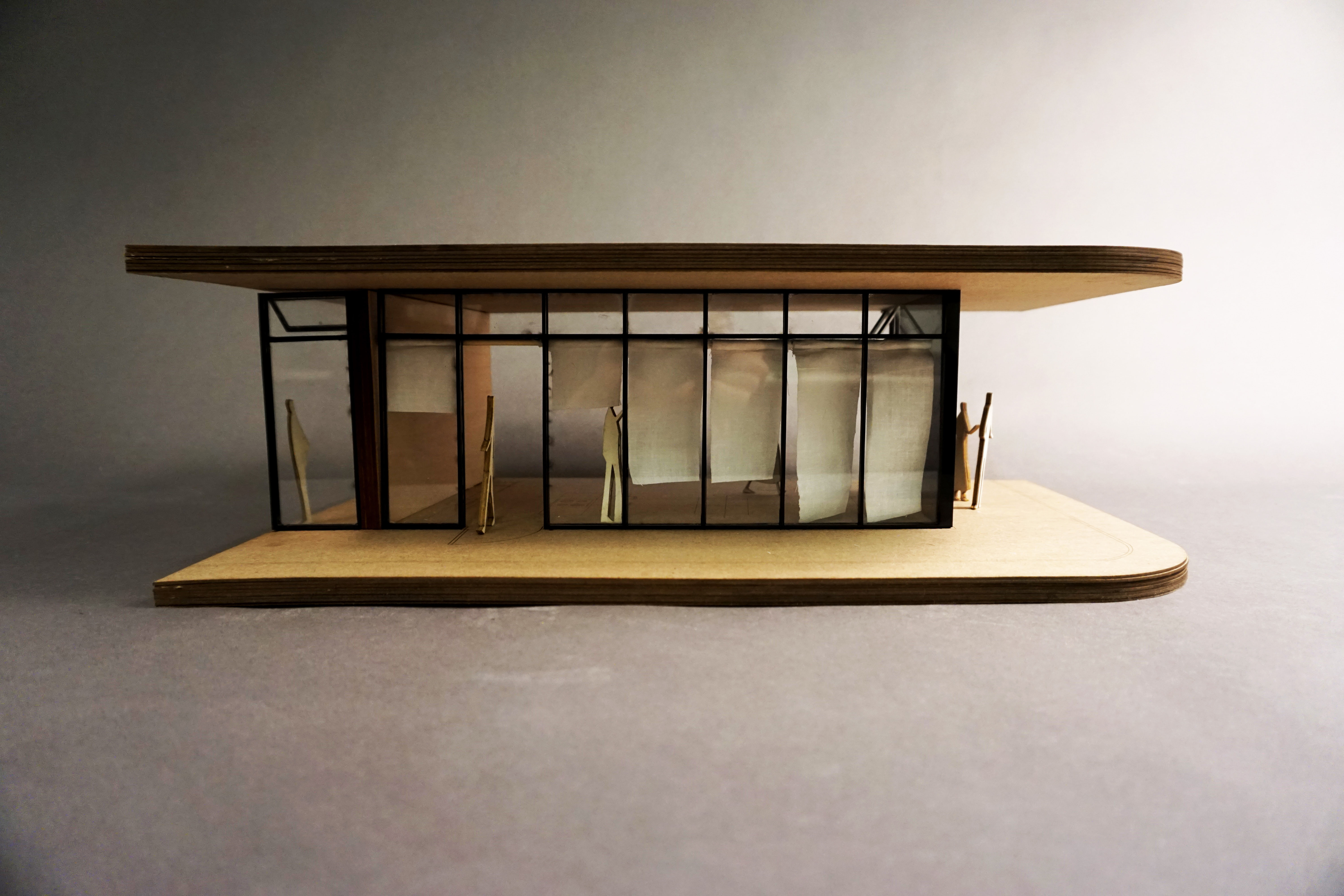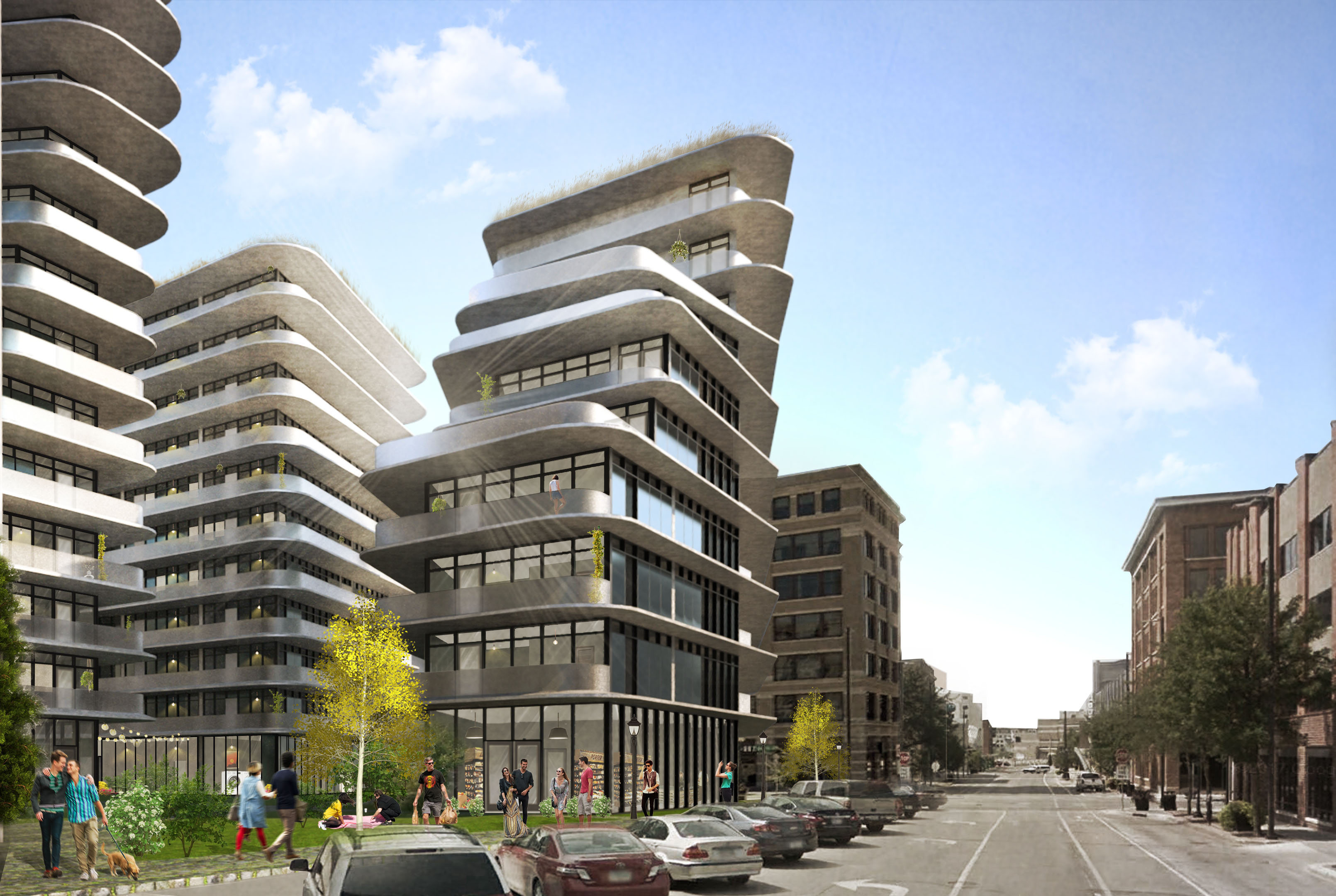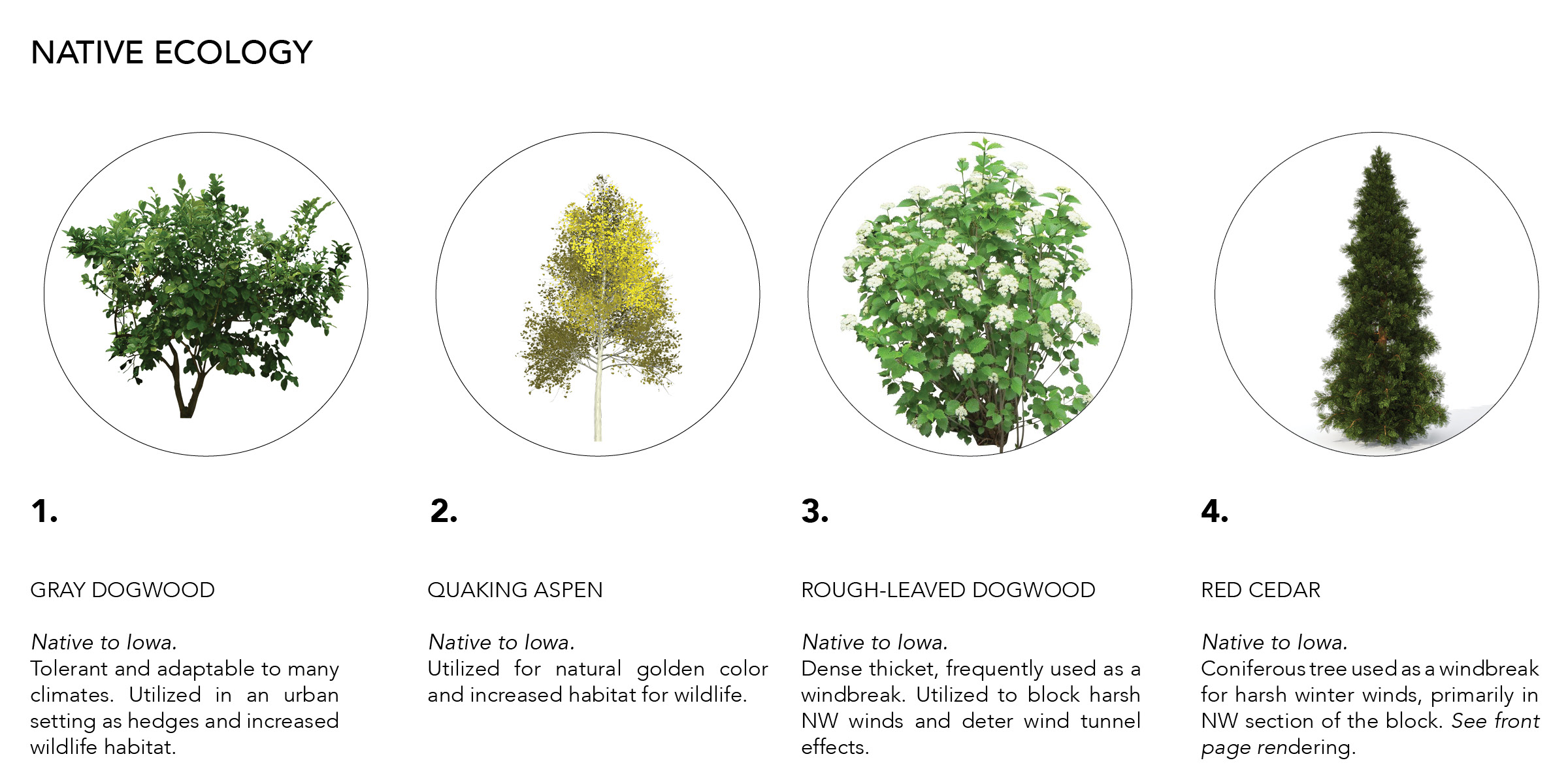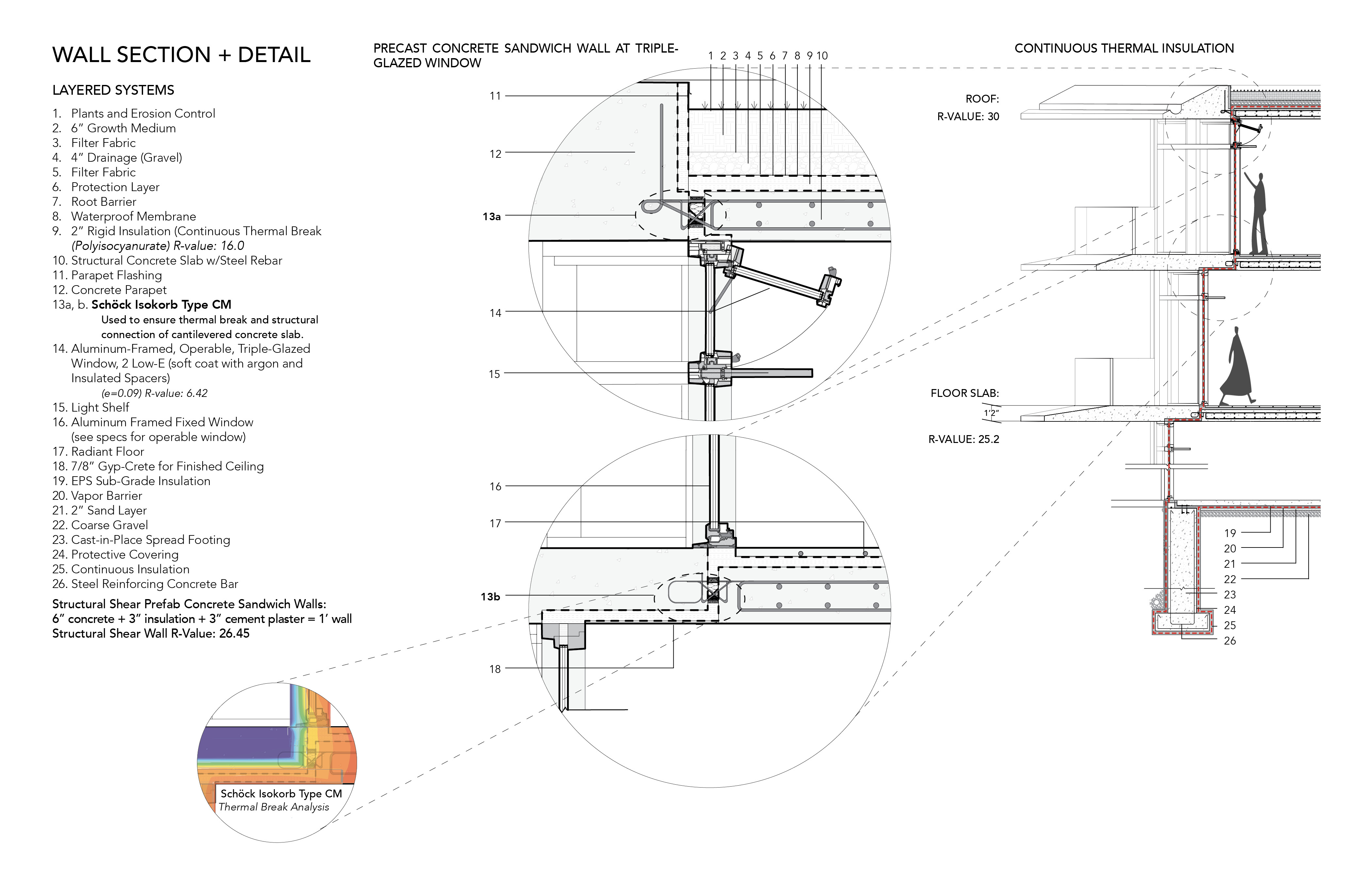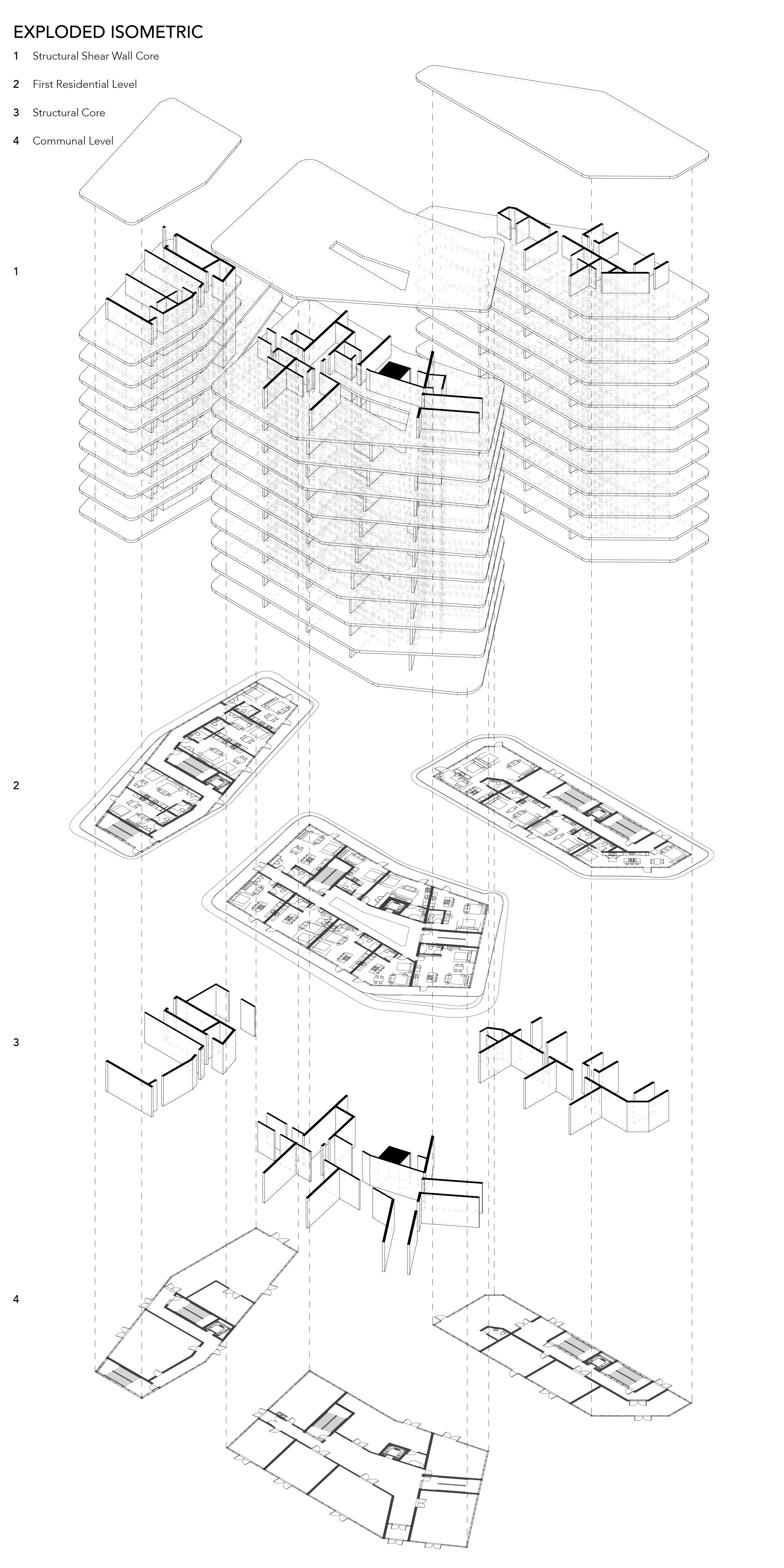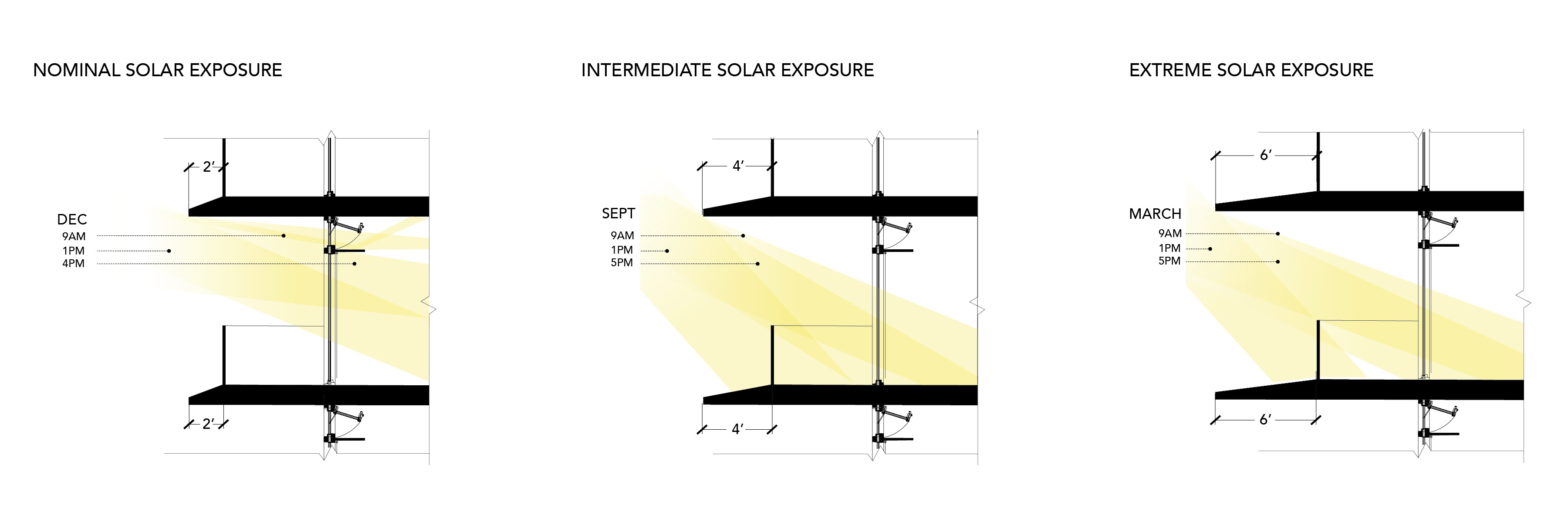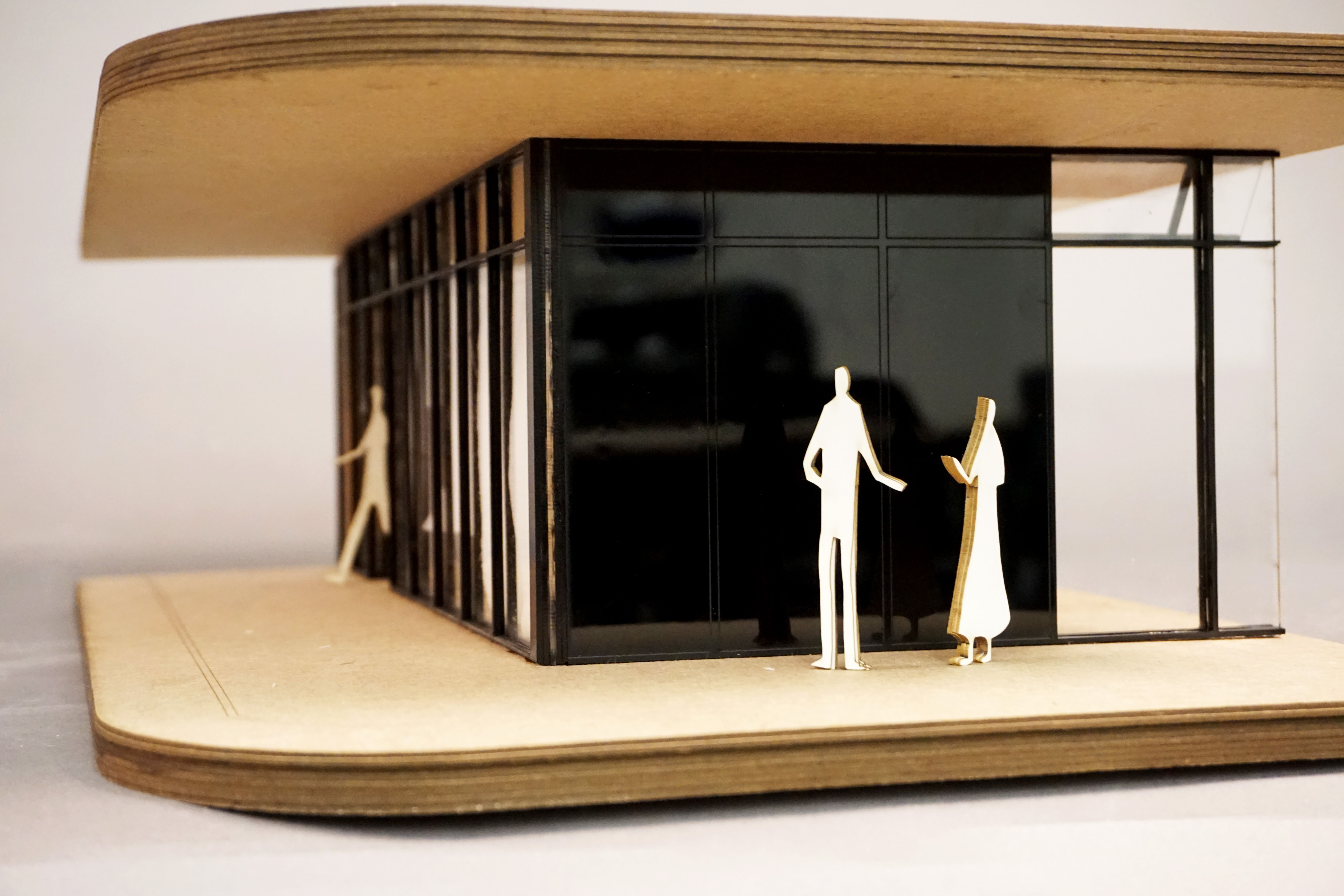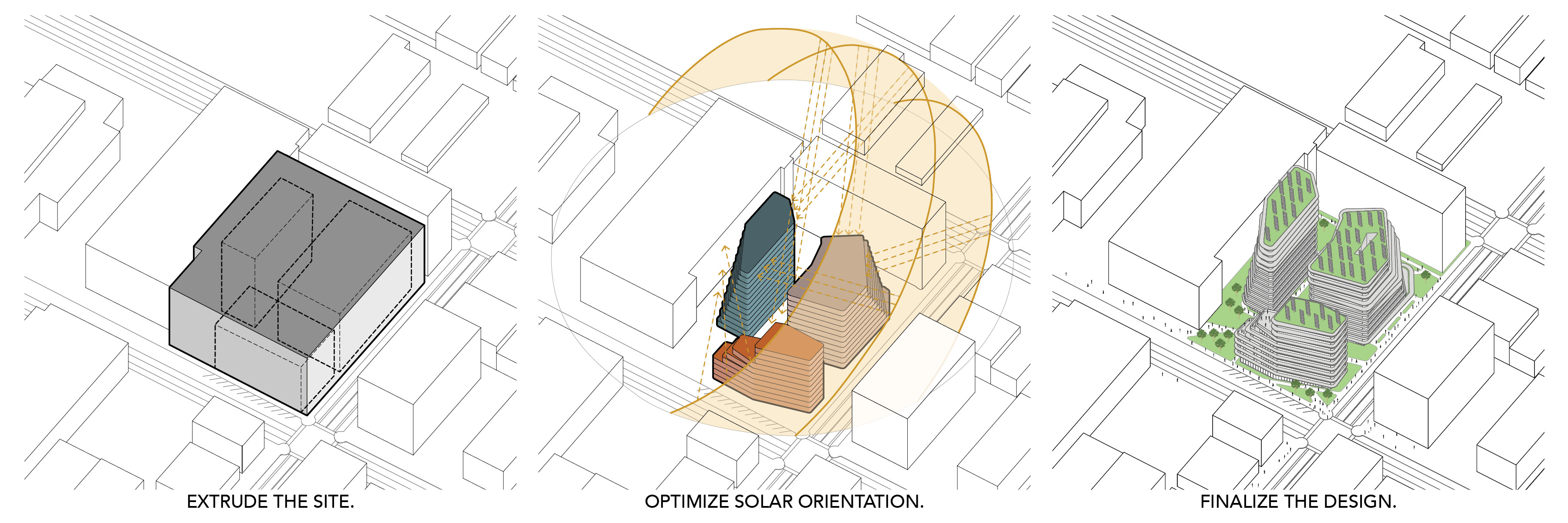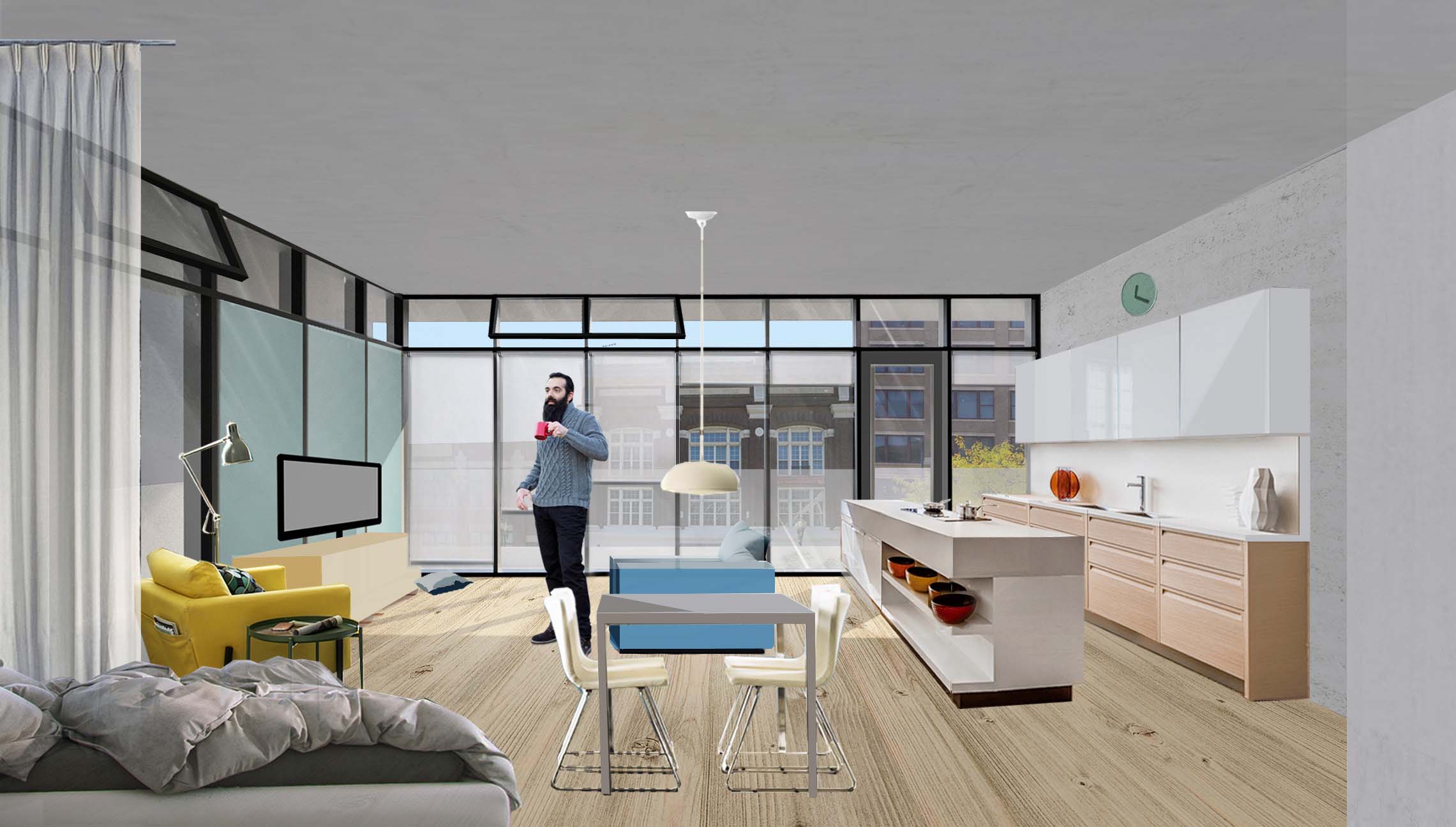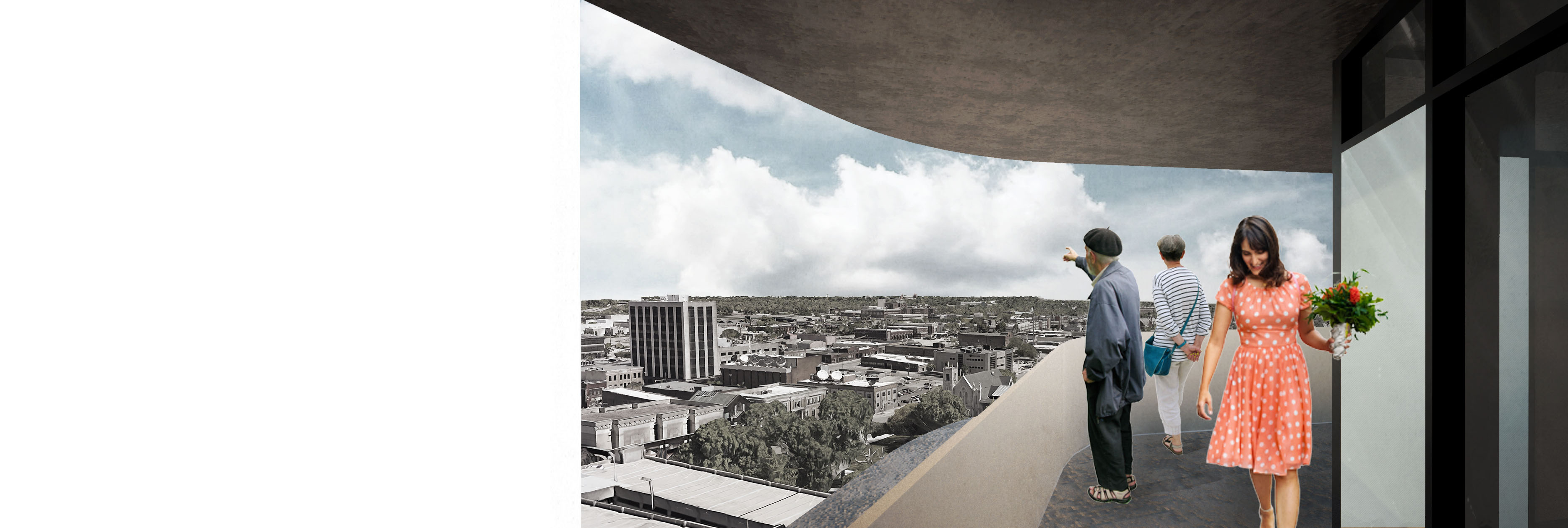(RE) Engaging Cedar Rapids
Miranda Moen
Chris Perez
Second year MARCH studio
Instructor: Ulrike Passe
2017
(RE) Engaging Cedar Rapids enables the downtown core of Cedar Rapids to become more walkable and welcoming by offering citizens access to a local grocery store, more retail space, and an alternative housing model to foster the foundation of a thriving downtown community. The site is situated on a block that has an underused parking lot and residential tower that houses low-income, senior citizens and disabled persons. Currently the site has little program but is centrally located between the Cedar Rapids Public Library and a range of downtown businesses. Therefore, our proposal focuses on creating a space of connectivity and community interaction by utilizing its prime location as both a “through-space” and a “stopping place” by enhancing green space on site and services to both residents and the public. The solar geometry of the site was utilized by use of DIVA and Ladybug for Grasshopper to custom-design the three proposed mixed-use buildings on site. A total of 150+ residential units address the housing needs of a wide variety of demographics, including the high-demand for active-aging housing in Cedar Rapids. Through a mix of both market rate and affordable options, our proposal seeks more housing equity in the downtown core and hopes to provide sustainable, aesthetically pleasing solutions to housing in Cedar Rapids.
Design for Integration
(RE) Engaging Cedar Rapids addresses housing accessibility unique to Cedar Rapids, creating a composition of spaces that enhances activity and accessibility in the downtown core through sustainable measures. The proposal provides 150+ residential units, focusing on the in-demand active aging population of Cedar Rapids. Paired with the new urban ecology, the ground-level features a grocery store, community workshop space, cafe, and multiple retail spaces. Lastly, the proposal utilizes the solar geometry to passively design the undulation of the massing and façade for optimal sunlight, heating, and cooling, thereby integrating both programmatic and climatic strategies into the overall design.
Design for Community
(RE) Engaging Cedar Rapids activates a new urban edge in close proximity to a newly developed park which seeks to incorporate the community within the downtown area. The blocks immediately surrounding the site combine a mixture of businesses and restaurants, but lack core services that support basic needs, encourage growth, and attract a more diverse demographic. To support our demographic, we have incorporated 150+ residential units in three towers at the Southwest corner of a downtown block. The ground levels of each building provide amenities to the community and residents through gathering spaces, nonprofits, residential services, and a communal laundromat.
Design for Ecology
Through a desire for a new urban ecology, (RE) Engaging Cedar Rapids turns the former greyfield into a lush green space with native plants and trees in order to revitalize the ecosystem in an urban setting. The landscaping of the site incorporates a rain garden and green space that connects to the existing community. Sturdier deciduous and coniferous trees will be planted on the NW side of the site to curtail harsh NW winter winds that would impact the infiltration of the buildings in the winter and deter the wind tunnel effect at the base of the towers on site.
Design for Water
Downtown Cedar Rapids is situated next to a river with a history of heavy flooding, most recently experienced in 2008. Therefore, the first level is taller, construcated of concrete, and utilizes a resilient window system to withstand the pressures of flood water. Moreover, rainwater that falls on site is collected and processed through intensive green roofs and a central rain garden, draining water below grade to be stored and recycled back into the local water system. This 19,000 square foot system of green roofs, permeable pavement, and rain gardens provides a continual loop which manages 98% of stormwater and greywater on site.
Design for Economy
Adding active-age housing allows the densification of downtown Cedar Rapids to re-engage a demographic that is currently ignored. (RE) Engaging Cedar Rapids therefore incorporates residential units that respond to the housing needs articulated by a 2016 ‘Housing Needs Analysis for Cedar Rapids’, creating affordable, market-rate options. By utilizing passive strategies and recycled concrete from the preexisting parking lot on site, our design proposal is optimized to reduce operating costs for low-income residents and promises a resilient housing market, while the service spaces on the ground-floor offer opportunities for the economy of Cedar Rapids to grow.
Design for Energy
By utilizing Grasshopper, DIVA, and Sefaira in our project to calculate the ideal exposure of South-facing windows, our proposal maximizes winter-sun solar panel efficiency for direct solar gain and passive heating. Our results show that renewable resources can be used for energy 73% of the year when utilizing photovoltaic panels. Most of the energy goes to lighting in the winter, however no energy is needed for heating from April-October and cooling is rare thanks to natural ventilation and passive shading. With an EUI of 4 kBTU/ftˆ2/year, our design is successful in exceeding the 2030 goals.
Design for Wellness
Passive comfort drove the design for (RE) Engaging Cedar Rapids. The overhangs and orientation provide maximum daylight throughout the day, without excessive glare or heat gain. In the Southern building, the lowest residential floor has a mean daylight factor of 6.2% with 49% of the overall floor area being lit throughout the day. This is achieved through a central atrium that allows light to penetrate the core of the building. Windows that line the building for natural ventilation are placed so that 92% of residents are within 15’ of operable windows and 97% of the floor area has views outdoors.
Design for Resources
Recycled concrete from the previous parking lot on site is utilized within the structural core of the building to not only reduce the carbon footprint, but also ensure structural stability and safety during flooding. Using 58% of concrete on site, we are able to reduce the amount of concrete that is being extracted, transported, and manufactured elsewhere and reduce carbon emissions by 84%. Moreover, the lifespan of concrete allows our design to last for hundreds of years with little maintenance. Thus, savings are achieved through the use of on site concrete and passive strategies such as thermal mass that recycled concrete allows for.
Design for Change
(RE) Engaging Cedar Rapids utilizes the adaptable strategy of flexibility within each floor, ensuring the longevity of our design. The residential units have no fixed internal walls to provide a resilient layout that becomes adaptable over time and can be converted into other spaces if necessary. During shock events, such as another downtown flood, the buildings respond and bounce back quickly due to power generators that are located at the top of each floor. In addition, PV panels recharge elevators immediately following blackouts, ensuring that residents with mobility challenges have safe and easy access to leave the building if needed.
Design for Discovery
(RE) Engaging Cedar Rapids pushes discovery for residents by incorporating public spaces on the ground-floor and by creating inviting areas for community interaction. A former parking lot, the site’s re-designed landscape and communal spaces allow for thoughtful experiences. Additionally, the ground-floor workshop spaces are utilized to promote discussions about sustainable living and resilient designs that relay the strategies of the building back to the community. We discovered that the integration of sustainable measures into architecture to produce a resilient design and aesthetic are skills that will remain with us and allow us to make a lasting impact.
